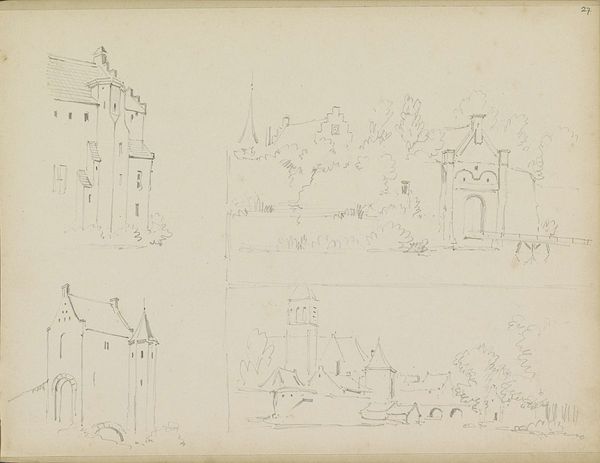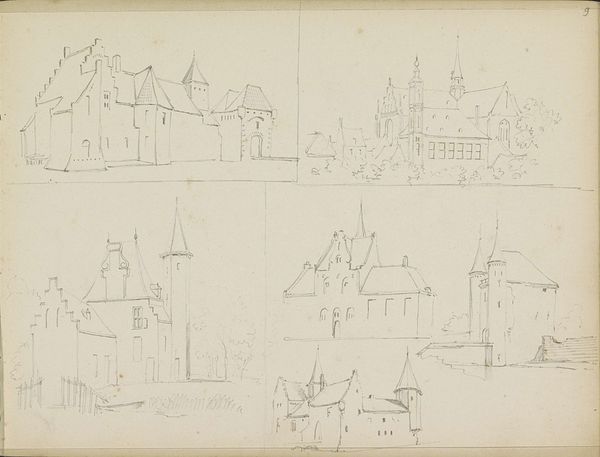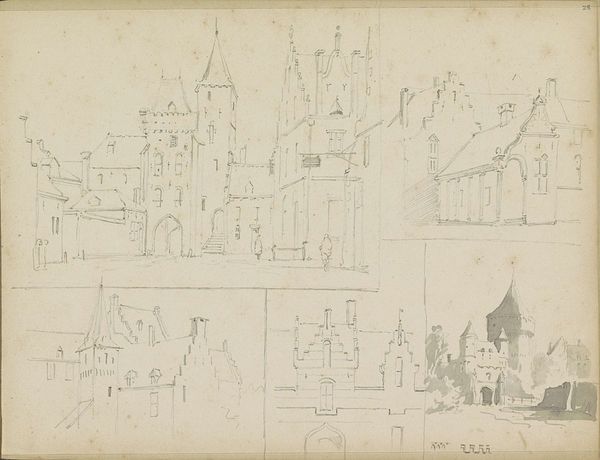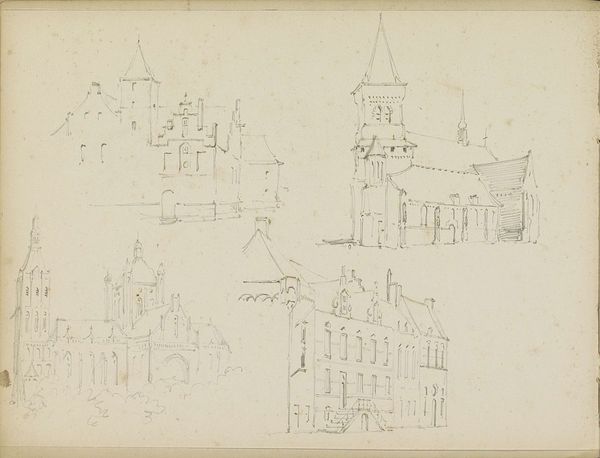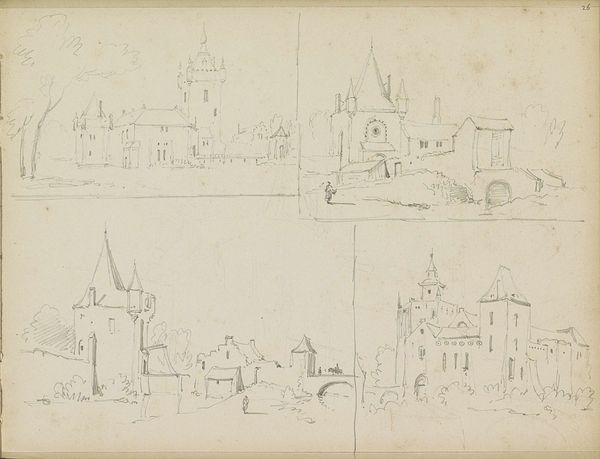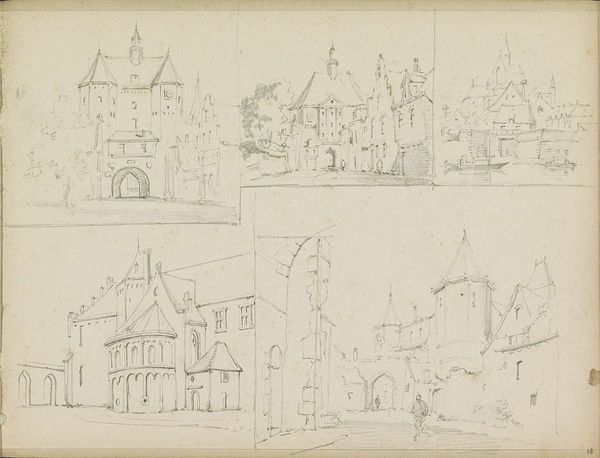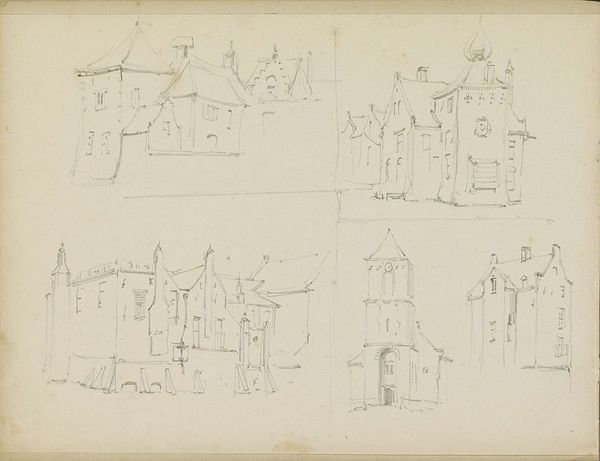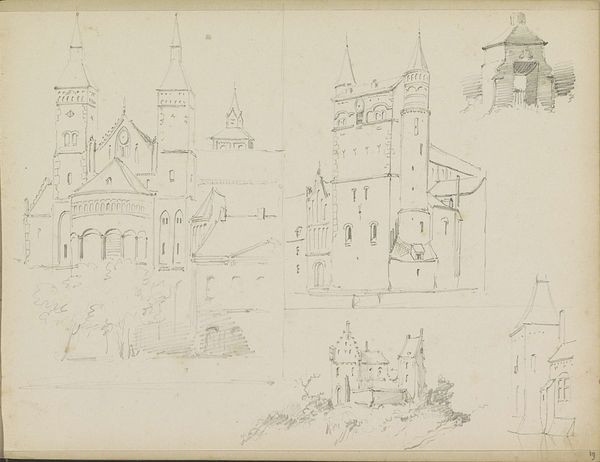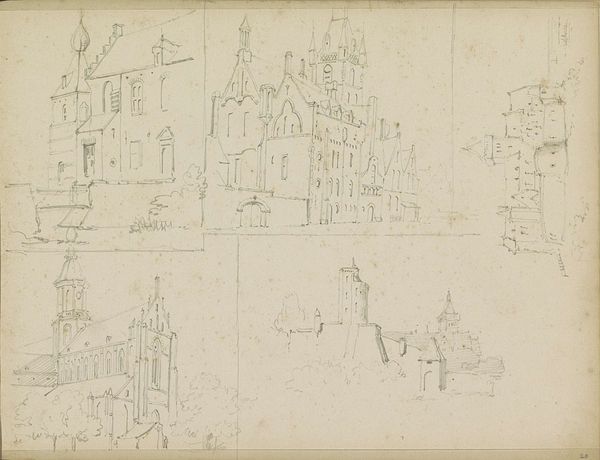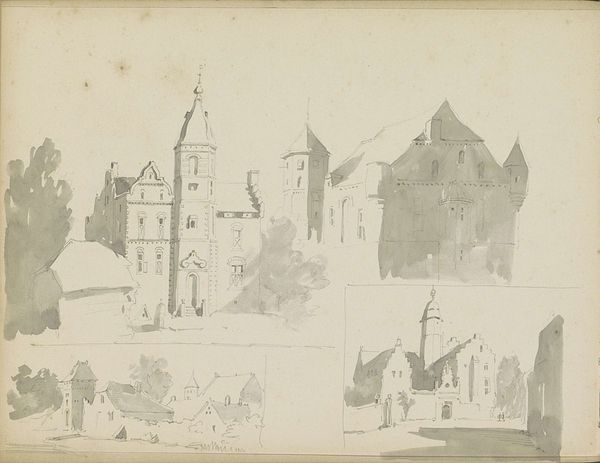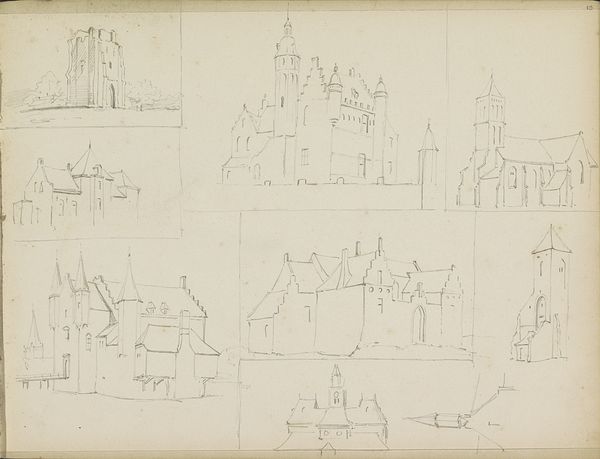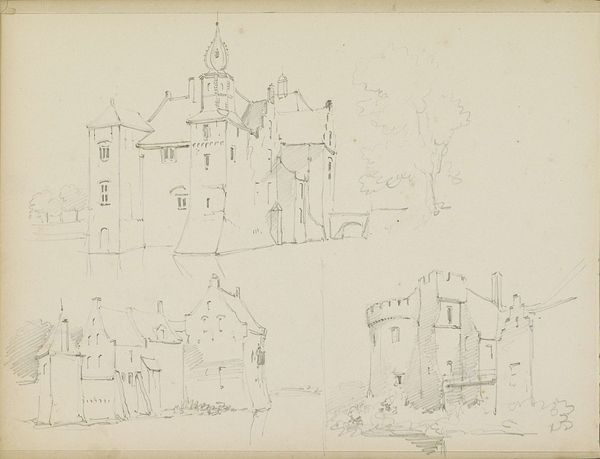
drawing, paper, pencil
#
drawing
#
aged paper
#
toned paper
#
quirky sketch
#
sketch book
#
landscape
#
paper
#
personal sketchbook
#
idea generation sketch
#
sketchwork
#
ink drawing experimentation
#
pencil
#
sketchbook drawing
#
cityscape
#
academic-art
#
sketchbook art
#
realism
#
building
Copyright: Rijks Museum: Open Domain
Curator: Looking at "Studieblad met gebouwen," or "Study Sheet with Buildings," created by Adrianus Eversen sometime between 1828 and 1897, we see a series of architectural sketches on aged paper, likely from a sketchbook. Editor: The pale tones of the aged paper give the sketches an ethereal feel, like ghostly memories of long-gone structures. It's minimalist, fragile—almost vanishing before your eyes. Curator: These sketchbook drawings reveal Eversen’s method. Note how he explored various compositional ideas on a single page. It is probable he sketched these buildings for later use in his better known cityscape paintings. Sketchbooks provide a window into the artistic process often obscured in finished works. Editor: Absolutely, this personal glimpse dismantles the myth of the artist as a solitary genius, conjuring finished pieces from thin air. This sheet suggests a more tentative process – an artist experimenting and playing with forms, which in turn emphasizes the work of architectural structures and landscape in the Dutch urban and rural identities. Curator: Furthermore, the presence of these structures documented is very important, because art from this time was frequently patronized by wealthy elites to reinforce specific societal structures, for example. It could very well be that we see the documentation and creation of a romanticized view of these locations for upper-class clientele. Editor: It brings forth that inherent tension, doesn't it? It makes one question whether they romanticize reality for some, and whether it represents inaccessibility to others who are outside of these socio-economic structures. This all makes the image more pertinent, to look at in relation to how the structures influenced the collective memory, gender roles, identity, race, and so on. Curator: A vital and compelling angle on this humble study sheet! Thanks to your remarks, I'll never see this artwork the same way again! Editor: And you have grounded my interpretation of Eversen's sketching practice within its socio-historical art context! Thank you!
Comments
No comments
Be the first to comment and join the conversation on the ultimate creative platform.

